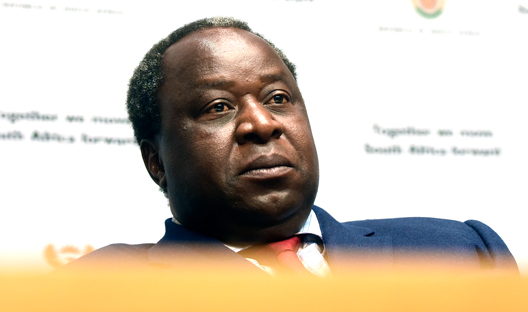Receive Focus insights straight to your inbox
The July MPC meeting will take place in the wake of an insurgence orchestrated to disrupt infrastructure and food supplies in KZN, which morphed into looting and destruction across KZN and parts of Gauteng.
Listen: The economic cost of SA Unrest
In this episode of No Ordinary Wednesday with Jeremy Maggs: Guests count the costs of unrest that gripped Gauteng and KwaZulu Natal.
The MPC is widely expected to leave the repo rate unchanged at 3.5%, for the seventh successive time. FRA rates, however, maintain a bias of higher rates, with a probability of 40% of a 25bps rate hike this week and a total of 75bps by January 2021.
This is well above our forecast of a total of 25bps over the period. Should three-month JIBAR rate rises during in any month, FRA rates would also need to rise, widening the spread over the repo rate from the current 19.5bps.
The May MPC meeting focused on the balance of risks to the inflation trajectory, with only small adjustments made to the inflation forecast. The GDP growth for 2021 was raised from 3.8% to 4.2% due to an upward revision of its Q1 GDP estimate to 2.7%q/q saar, which was below the outcome of 4.6%.
Key focus points
The key focus areas of the meeting will be the tone of the statement and the assessment of the balance of risks to inflation. We viewed the tone in the May MPC meeting as neutral to cautious. The post-MPC engagements of MPC members have however led to divergent interpretations in the investor community, hence the steepening of the FRA curve. Some of the key issues raised were:
- The SARB’s intentions in lowering its of focus on the mid-point of the target band, from 4.5% to the lower end of the target range of 3.0%, which is more in line with trading partners;
- That the policy rate cannot be maintained indefinitely at current levels, particularly since the inflation-adjusted trajectory of the policy rate is negative; and
- That EM central banks have started to normalise interest rates (with an acceleration in inflation in countries such as Russia and Brazil requiring an earlier response).
SARB communication
The SARB’s tone in the statement and forward guidance will be closely monitored. We think the challenge is balancing the risk of a wider negative output gap (neutral) with a negative real rate and a risk of higher inflation (cautious/hawkish).

GDP growth
Following the events of last week and a high level of uncertainty attached to the growth outlook, we think that the MPC could focus on downside risks to growth, which could lead to a wider negative output gap.
However, the medium-term risk is how the potential growth rate could be affected by a decline in business confidence, which in turn could stall private sector fixed investment and translate into a faster reduction in the output gap.
Inflation dynamics
Volatility risks to monthly inflation forecasts have increased. While there is an upside risk to food inflation due to the increase in transport costs (with the petrol price likely to increase by about 80c/l in August), our understanding of the situation on the ground is that food supply has been restored, with pressures contained.
However, we think that the balance of risks to the inflation forecasts remains to the upside. In addition to the SARB’s upside risks set out in May, which included rising international consumer prices, producer and raw material prices, food prices, an escalation in wage demands and electricity tariffs for 2021 (from 9.7% to 10.6%) and 2022 (from 11.4% to 12.1%), we flag the following:

Fiscal consolidation could be delayed: Pressure on government spending continues to mount. Non-interest government spending could exceed the February 2021 Budget Review forecast.
National Treasury has indicated that an increase in the public sector wage bill, which could be R18bn or 5.0% higher than the budgeted 1.5%, will be in line with the fiscal framework (which has been factored into the SARB’s inflation forecast).
However, President Ramaphosa has indicated that a basic income grant is being considered, which probably involves an extension of emergency social grant. Additionally, a fund could be created to rehabilitate small and medium-sized business funds damaged by the looting.
The infrastructure budget is most likely to suffer more cuts, and the R12bn contingency reserve, set aside for the battle against Covid-19, could be reprioritised. Revenue receipts, which were ahead of target from April to June 2021 and were showing an increase in buoyancy as the cyclical recovery gained momentum, could be impacted if there are protracted Advanced Level 4 restrictions.
This will depend on whether there is an increase in infections as a result of last week’s events, as well as the extent to which the events have interrupted the vaccine rollout momentum.
A higher oil price: The drawn out OPEC+ discussions about production increases, combined with ZAR weakness in July are likely to translate into an increase in the fuel price of about 80c/l in August.
The OPEC+ agreement on Wednesday to increase output by 400 000 b/d from August, caused the price of Brent oil to recede from a one month average of nearly $75/bbl to $68.7/bll. This puts the year-to-date average at $66/bbl. and the projected 2021 average at $66.5/bbl. (based on the forward curve of Brent spot). These are above the SARBs forecast of $62/bbl. For 2022, the SARB’s forecast of $60/bbl. is below the current forward implied average of $64.9/bbl.
Temporary stronger starting point for the ZAR: A firmer starting point of the ZAR (possibly R14.12/$, unless manually adjusted by the SARB in view of recent developments) compared to the estimated starting point of R14.46/$ in May. Recent rand weakness related to international and domestic developments indicates that the starting point for the ZAR in the September inflation forecast is likely to be about R14.50/$.
Unrest-related price increases: There could unexpected price pressure emanating from higher insurance and security costs.
Our rate view
We remain of the view that the normalisation in South Africa’s interest rate cycle could start in early 2022, at a measured and gradual pace, although the there is a risk of an earlier start in November 2021.
In addition to the local drivers of inflation, the Fed’s reaction function to higher inflation/maximum employment and the announcement of the starting date for tapering of bond purchases, will be an important precursor to the timing of the SARB’s commencement of hiking rates in our view.
The FOMC meeting takes place next week (28th of July) followed next month by the Jackson Hole Economic Symposium (26-28 August). We are also watching the release of June’s CPI inflation rate (we forecast a rate of 4.9%) and the BER’s inflation survey for Q2 21 on Thursday.




